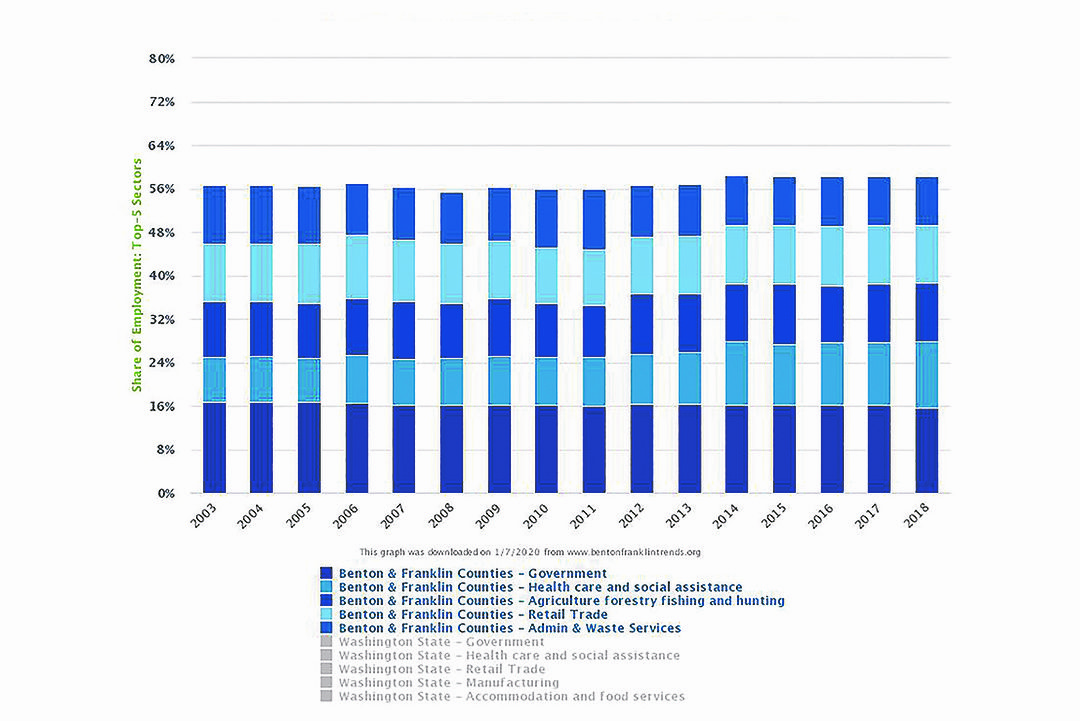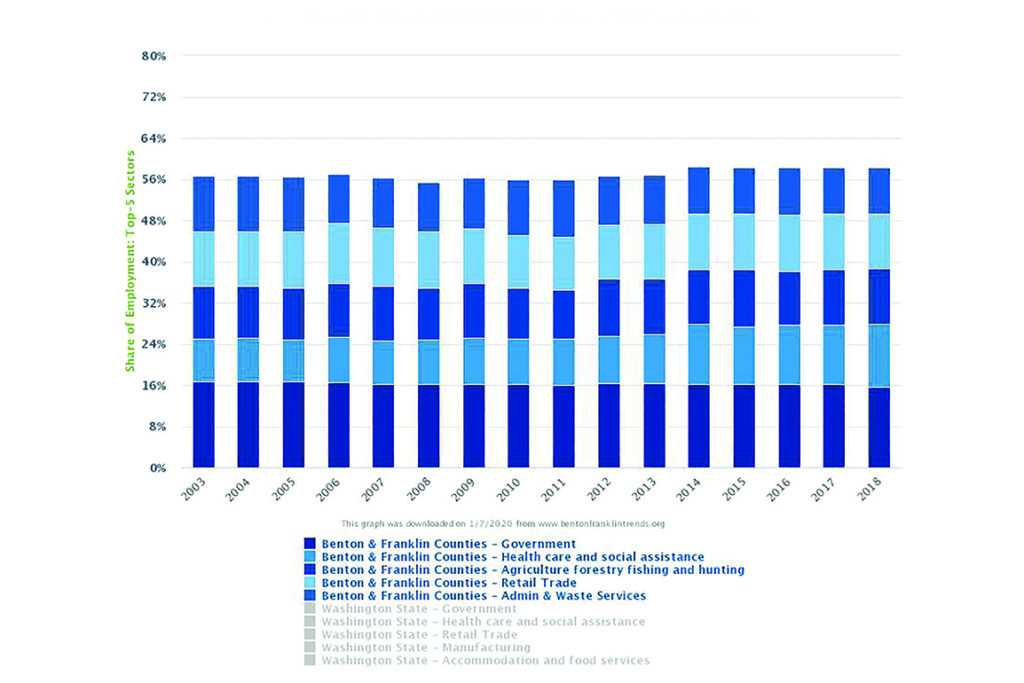
Home » Professional, technical services disproportionately large here
Professional, technical services disproportionately large here

January 13, 2020
By Patrick Jones
One of the startling aspects of the greater Tri-City economy is the juxtaposition of a large agricultural sector with one formerly called the white-collar sector. In the terminology of labor economists, the latter consists of professional and technical services. It, too, looms large in the two counties.
Today,
we might call the components of professional and technical services the anchors
of “knowledge economy.” That is, brainpower is the primary asset necessary for
a good portion of the jobs in the sector.
Industries
included are legal services, accounting firms, architectural and engineering
offices, specialized design services, computer systems design shops, scientific
research and development organizations, advertising and marketing firms, as
well as general management and consulting services companies.

Obviously,
knowledge workers populate other industries as well.
Every
sector runs on a certain number of occupations that require at least a
bachelor’s degree in arts or science. Think of health care, with its large
presence in Benton and Franklin counties, or consider information technology,
albeit with a very small presence here. Certainly manufacturers employ
professionals who bring to the job higher education training.
For
sure, the professional and technical services sector employs many whose job
requirements don’t run to a four-year degree. Yet, compared to most large
sectors in any economy, with the exception of information, this one
demonstrates a high proportion of highly-educated workers.
Why
do we care? For one, people working in professional and technical services
firms bring talents into their community.
Known
as “human capital” among economists, these skills can be vital in a variety of
areas, such as education, cultural life and a general civic engagement. But
since this is a business publication, it’s important to underscore role of
wages and salaries that this sector contributes to the local economy.
Consider
its average annual wage in 2018 for the two counties: $98,553 in Benton and
$53,129 in Franklin.
As
Benton-Franklin Trend data shows, these represent wages far higher than the
overall annual wage averages in each county: $55,214 in Benton County and
$42,362 in Franklin County.
Only
one industry paid more in Benton County, “Management of Companies,” at about
$128,000 annually. This small industry covers financial holding companies and
managing regional offices. Two industries paid a bit more in Franklin County:
wholesale trade and finance/insurance.
Wages
and salaries make up the largest component of income, so any local economy
welcomes higher wage jobs.
Generally,
the question revolves around how many of these jobs can an economy attract and
support. Specifically, how big a professional and technical services sector can
the economy of greater Tri-Cities support?
As
the Trends data reveals, the sector is currently not among the top five in the
regional economy, by headcount. In 2018, it ranked seventh.
By
the numbers, it counted 9,127 among its ranks, or a little more than 7 percent
of the entire workforce in the two counties.
The
ranking of sectors by total wages earned tells a different story, however. In
2018, professional and scientific services was the second largest contributor,
with total earnings of $876 million. Government, ranked second by headcount,
came in first, at $1.2 billion.
Yet
over time, the numbers in professional and technical services here have
diminished, as a share of the total workforce and even by headcount.
They
peaked in 2011 at 12,200. From 2003-12, the sector was among the top five by
headcount. Since then, it has been bumped down, first by administrative and
waste services, then by the hospitality industry (eating & drinking plus
accommodations).
Yet
from 2003 to the present, professional and scientific services has always
ranked first or second in total wages paid in the local economy.
As
we look toward the economic future of the greater Tri-Cities, can professional
and technical services resume its status as one of the top five employing
sectors?
Not
if recent trends hold true. Headcount numbers have actually declined by 7
percent since 2014. Fastest growing, by percentage, have been the construction
industry (48 percent), hospitality (22 percent), followed by waste and
administrative services (10 percent).
Yet,
even if the sector doesn’t crack the top five by headcount, it is likely to
remain a very significant presence in the local economy. This can largely be
chalked up to the thousands employed at Pacific Northwest National Laboratory
in Richland. At 7 percent, the sector was slightly larger than its counterpart
statewide in 2018, which claimed 6 percent of the workforce. It stands far
larger than its counterpart in all Eastern Washington metro areas.
The
closest was Spokane County, with 4.5 percent of its workforce in the sector.
Ranked
by wages and salaries earned, this vital group of industries is likely to
remain in the top sectors three for the greater Tri-Cities. That’s a happy
place for this economy.
D. Patrick Jones is the executive director for Eastern Washington University’s Institute for Public Policy & Economic Analysis. Benton-Franklin Trends, the institute’s project, uses local, state and federal data to measure the local economic, educational and civic life of Benton and Franklin counties.
Local News Legal
KEYWORDS january 2020




